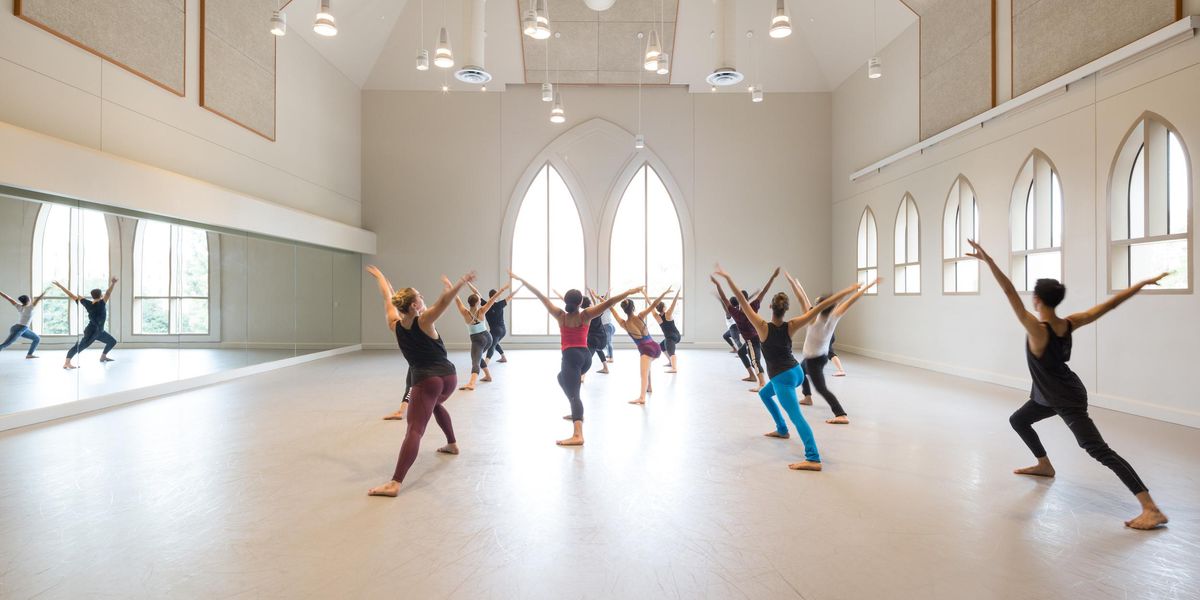Dancing Tall
At 6′ 6.63″, Fabrice Calmels towers over his fellow dancers at the Joffrey Ballet. His height gives him an undeniable presence onstage—whether he’s playing the statuesque lead in Apollo or the domineering Von Rothbart in Swan Lake. It also recently earned him a Guinness World Record as the “World’s Tallest Ballet Dancer.” But that much length comes with its own set of challenges. “People assume that height makes dancing easier, but it’s actually the opposite,” Calmels says. “There’s so much more mass to coordinate, which takes a toll on your body.”
Though beautiful, long lines could also increase your risk of injury. Katie Lemmon, certified athletic trainer at Athletico Physical Therapy in Chicago, says dancers with long legs need to build more strength to counterbalance a limb that is farther from their bodies, especially if they have a shorter torso. “If you don’t have enough core strength, you could sustain strain injuries to the hips or lower back,” she says.
Some tall dancers struggle with balance and alignment—especially when it comes to grand allégro and pirouettes. “When you’re tall, you can’t just spin. Multiple pirouettes aren’t possible unless you’re in perfect alignment,” Calmels says. “I’ve had to work harder at rotating around my spine, which means engaging my back and abdominals.”
Experts agree that the key to avoiding injuries and maintaining coordination is a strong core. It’s an important asset to all dancers, but an especially crucial one for those with lengthy limbs. Calmels starts each day with 200 sit-ups before he even gets out of bed. Lauren Kreha, certified athletic trainer at the Harkness Center for Dance Injuries at the NYU Langone Medical Center, suggests holding a plank for about a minute per day, focusing on keeping a straight line throughout the body and gently engaging the abdominals. “Especially for dancers who’ve already started experiencing back pain, planks will strengthen without irritating the spine,” Kreha says. “I recommend starting with a forearm plank and then, as you feel more stable, moving to your hands.”
The next step is Pilates, which not only builds strength but also improves range of motion in the hips. “Pilates exercises help make sure dancers’ hip flexors are strong and well-balanced with the core and back muscles,” Kreha says. “They can give you the extra control needed to manage all that length.” Here, Kreha and Lemmon share four Pilates-inspired exercises to strengthen tall dancers’ core, improve control of lengthy limbs and decrease the chance of injury.
To Improve Alignment
1. Lie on your side in a straight line from head to toe. Your head can rest on your arm to keep your spine in line.
2. Flex your feet and lift your top leg to hip height, keeping the leg parallel.
3. Swing your leg to the front as far as you can go without tucking your pelvis. Then slowly swing it behind you, stopping before your lower back arches.
4. After 10 controlled swings back and forth, switch to the other side.
“Focus on maintaining a neutral pelvis, keeping the natural curve in your low back,” says Lemmon. “The bend should be at the hip.”
To Strengthen Your Core
1. Lie on your back with your abdominals gently engaged and arms at your sides. Bend your legs into a tabletop position at a 90-degree angle, with the lower legs parallel to the floor.
2. Slowly lower your right leg from the hip, retaining the 90-degree bend in the knee,until your big toe touches the floor. Then return to the starting position.
3. Alternate legs, repeating the exercise for 3 sets of 10 toe touches (5 on each leg).
“I recommend doing this exercise before class to help engage your abdominals,” says Kreha. “Be sure to breathe throughout.”
To Increase Stability
1. Stand with feet together and arms out to the sides in a T shape.
2. As you plié on your left leg, extend your right leg into a parallel arabesque, but only as high as you can with your hips square to the ground. The key is to avoid rotating and to keep the standing leg’s hip, knee and second toe lined up.
3. Hold the arabesque position for 3 seconds, then return to the starting point. Do 3 sets of 5 on each leg.
“This improves core stability while working the legs, so it will help to increase range of motion in your extremities,” says Lemmon. “You should feel this in your glutes, but it shouldn’t be painful.”
To Improve Balance
1. Lie with your upper back on the floor and your feet on a stability ball. Your arms should be by your sides, and your body and legs straight, so hips are off the floor.
2. Alternate lifting each leg up off the ball with control, keeping both legs straight.
3. Repeat for 3 sets of 10 leg lifts (5 on each leg).
“This exercise is great for balance,” Kreha says. “The ball adds an extra challenge that teaches your body to maintain stability.”
Bonus: Get a Lift
For male dancers, who have the added challenge of lifting their partners, extra height means bending further toward the ground and lifting higher. Athletic squats are a great way to train the body to maintain proper spinal alignment while also strengthening the core and thighs, says Kreha. Practice three sets of 10 parallel squats, keeping your knees over your ankle bones (not knees over toes like in plié).




